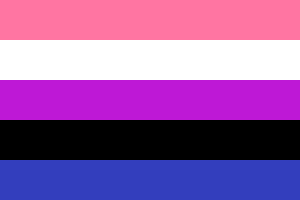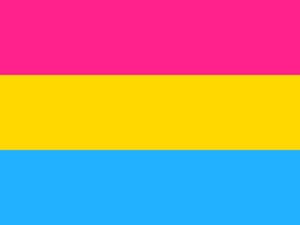
When she’s not busy saving the world one panel/cosplay/comic book…
Happy Pride!
BGN is going to provide you with QPOC content this month, get ready!
While you are out celebrating the most colorful month of the year, you may notice numerous flags flown. While the standard Rainbow pride flag is the most recognizable, this is not Lord of the Rings. One flag does not rule them all.
As the #BGNPridePlaylist is released this month, you will notice the graphics, while colorful, stick to a theme, reflecting the flag which each person identifies.
If you are unfamiliar, don’t fret. Here’s an easy guide to the different pride flags.

LGBT pride flag is a symbol of lesbian, gay, bisexual, and transgender pride.

Genderfluid flag, a symbol for genderfluid pride. While the purple stripe represents the combination of masculinity and femininity, the black represents all genders, third genders included.

Asexual flag, the black stripe represents asexuality, the grey stripe is the grey-area between sexual and asexual, the white stripe sexuality, and the purple stripe is for the community.

Pansexual pride flag, The pink band symbolizes women, the blue is for men and the yellow is for those of a non-binary gender.

Transgender pride flag represents the transgender community. It has five stripes: two light blue, two pink, with a white stripe in the center.

Bisexual pride flag, the pink color represents sexual attraction to the same sex only, the blue represents sexual attraction to the opposite sex only. The two colors “overlap” to create the purple stripe, representing a sexual attraction to both sexes.

Genderqueer pride flag, the lavender stripe (a mix of blue and pink) is meant to represent androgynes and androgyny. The white stripe represents a gender identity. The dark green is meant to represent those whose identities which are defined outside of and without reference to the binary.
Be sure to stay tuned for more #PrideMonth content from BGN!
When she’s not busy saving the world one panel/cosplay/comic book at a time, she is the social media curator for Black Girl Nerds. She doesn’t sleep between live tweets, convention appearances and podcast recordings. Human mom to a nerdy and rambunctious 8 year old, fur mommy to a dog and 2 cats, life is nuts. But she wouldn’t have any other way.









